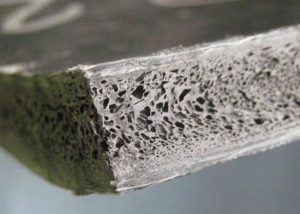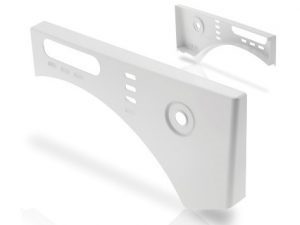On the KraussMaffei 451 GX machine we, in cooperation with the American company Trexel, are presenting the MuCell (Microcellular Foam Molding) technology. It is the technology of physical foaming of a part, which can be used in up to 60% of automotive projects. Injection of plastic together with nitrogen in a supercritical state saves 6 to 30% of material costs, reduces part weight, machine clamping force and cycle time.
The MuCell process – How does it work?

The essence of the MuCell foaming process is the injection of compressed inactive gases such as nitrogen and carbon dioxide in the form of supercritical fluids (SCF). They are very well homogenized with the molten thermoplastic in the plasticizing cylinder of the injection molding machine. Upon injection of plastic into the mold cavity and pressure drop, a lightweight structure with closed pores is formed, in which millions of gas bubbles are sealed in the mold. After cooling, they are 5 – 50 μm in size and compensate the shrinkage of the part by their pressure.
Both gases, N2 and CO2, used for the process are cheap, non-flammable, non-toxic and atmospheric, without detrimental effect on the environment. Carbon dioxide is particularly advantageous since it reaches supercritical conditions (liquid behavior and high solubility in the polymer) at 31°C and 73 bar.
That progress …
But where do we come across this technology in everyday life? Most likely, you meet MuCell every day. Looking at the engine compartment of your car, or while using the washing machine or dishwasher. And if you manage to break some of this part by accident, you can at least, while looking at its foamed structure, be warmed by the fact that, as one of the few, you know the story behind it.

Try MuCell technology at our Technology Center! Make a date for it.




